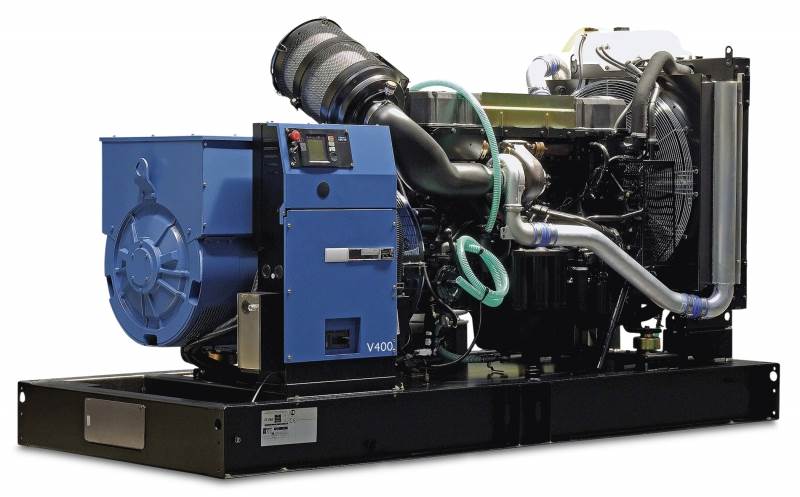- Contact 0870 350 7767
- |
- Advertise
Keeping UPS availability high
 News and PR from Kohler Uninterruptible Power - Published 14 May 2018
When data centre operators invest in UPS systems, it’s for one purpose only; to maximise power availability for their facility’s ICT equipment.
News and PR from Kohler Uninterruptible Power - Published 14 May 2018
When data centre operators invest in UPS systems, it’s for one purpose only; to maximise power availability for their facility’s ICT equipment. So how do UPS manufacturers fulfil this critical availability requirement? In fact, the industryÂ’s response has evolved steadily over the many years of its existence, by converting technological advances into UPS topology improvements. An apparently obvious starting-point is to maximise UPS component reliability. However, while optimised reliability is certainly important, it has limitations as an availability solution. As ever more reliable – and costly – components are used, a law of diminishing returns starts to apply, until further increases in component costs fail to yield worthwhile improvements in mean time between failures (MTBF).
Modular UPS designs exploit both opportunities; firstly, they increase MTBF by using redundancy, which creates fault tolerance. Consider a 120 kVA load, for example. This could be supported by a traditional, monolithic UPS, but if the UPS fails, power is immediately lost. Instead, though, the load could be supported by a modular configuration comprising four 40 kVA modules. Provided the UPS has a decentralised parallel architecture (DPA) with no shared static switch or single points of failure, it can continue fully supporting the load, without interruption, even if any one module fails. This is known as N+1 redundancy. For even greater MTBF, the number of redundant modules can be increased, making an N+n configuration.
Yet we have asserted above that reducing MTTR will also contribute towards improved availability. Monolithic systems had to be repaired in situ; an operation that could typically take up to six hours, while the UPS remains off line. By contrast, a modular systemÂ’s faulty module can be pulled out and replaced extremely quickly; the UPS can be put back on line with the replacement module immediately and with minimised MTTR, while the faulty unit can be repaired away from the ICT installation and returned to backup stock.
The ultimate implementation of this concept comes with UPSs that offer ‘hot-swap’ capability. Hot-swap means that a faulty UPS module can be removed and replaced, all without shutting down or interrupting power to the load. Under these circumstances, MTTR dwindles to practically zero.
*http://www.datacenterdynamics.com/content-tracks/power-cooling/one-minute-of-data-center-downtime-costs-us7900-on-average/83956.fullarticle
Other announcements from Kohler Uninterruptible Power
-
Understanding your UPS battery’s amp-hour rating
If you’re specifying a UPS system, then it’s absolutely essential that you truly understand its battery autonomy; for how long will it support the load if the AC supplies fail?
14 May 2018
-
Future trends for UPSs
What does the future hold for UPS technologies and systems? We asked Alan Luscombe, Director at UPSL, for his views, as summarised below.
02 Nov 2017
-
UPS, heal thyself
UPSs exist solely to deliver clean, uninterrupted power to their critical load – but their ability to do so is entirely bounded by their resilience to failure of their own components or subsystems.
31 Aug 2017
-
Maintaining UPS efficiency when the load size diminishes
Modular UPS technology, as implemented in systems such as UPSL’s PowerWAVE 9500DPA, is now being exploited in a smart solution that maintains UPS efficiency even when the UPS load is severely reduced.
30 Aug 2017
-
Is it time to consider Lithium-ion batteries?
Why hasn’t the industry adopted lithium-ion solutions with greater enthusiasm, and is this likely to change? We can answer these by looking at factors relating to both lead-acid and lithium-ion bat.
30 Aug 2017
-
How UPS efficiency can contribute to data centre PUE
Improving UPS efficiency can help to better data centre PUE performance. The article discusses the options for this available to UPS operators who invest in the right, transformerless technology UPSs.
30 Aug 2017
-
The Internet of Things, data centres, and UPSs
The Internet of Things (IoT) is gaining traction at an accelerating pace; Gartner has predicted 26 billion connected devices by 2020, while others are calling even higher numbers.
30 Aug 2017
-
Director's Blog: So just what exactly is a UPS?
This blog written by Alan Luscombe, UPS Ltd Director, explains what a UPS is, as well as putting the various risks averted by UPS systems into perspective.
03 Aug 2015
-
Choosing a generator for data centre power protection
UPS generators are no longer just a backup plan. Today, they are considered a vital component of a company’s power protection policy, as sizing UPS batteries for protracted power blackouts is simply uneconomic and impractical. In choosing a generator for a data centre or other critical IT load application, a number of factors must be considered. These include the generator’s key components, environmental issues and the qualifications of the suppliers as well as compatibility with the UPS to be supported. In this article, Alan Luscombe, director at Uninterruptible Power Supplies Ltd., a Kohler company, discusses how generators work with UPSs, and the factors you must consider when choosing a generator as part of your power protection policy.
23 Jul 2015











